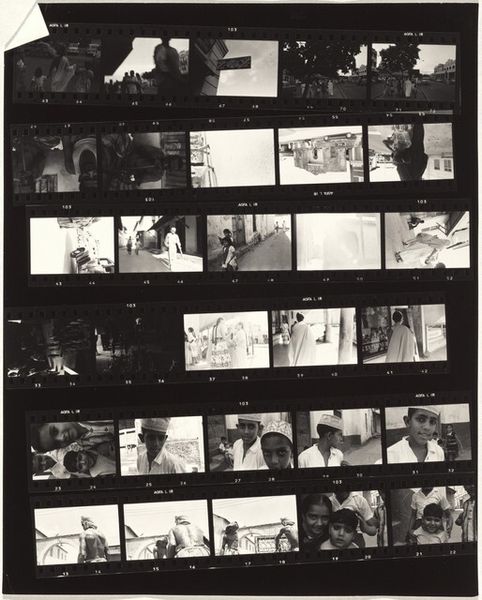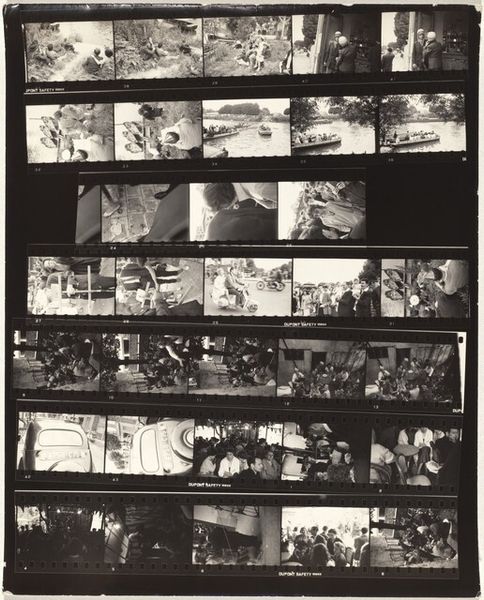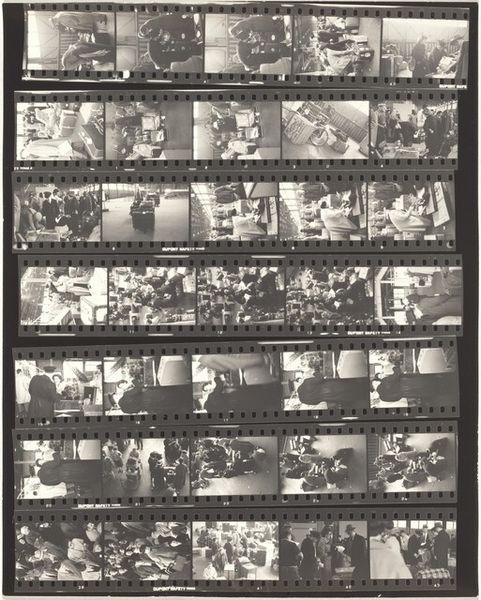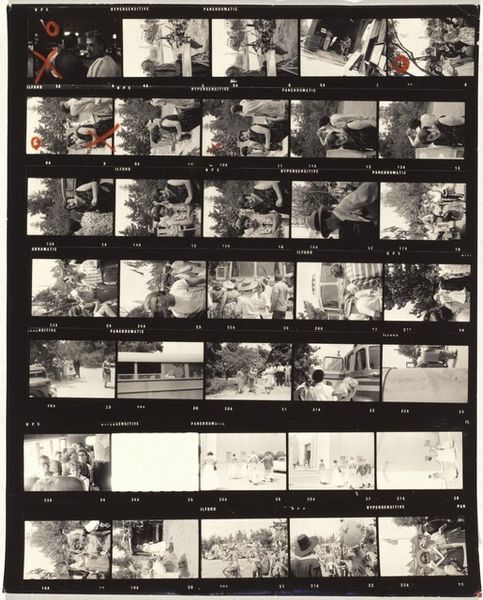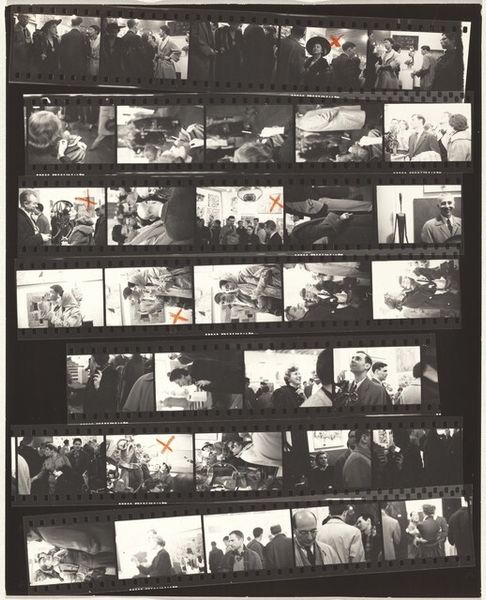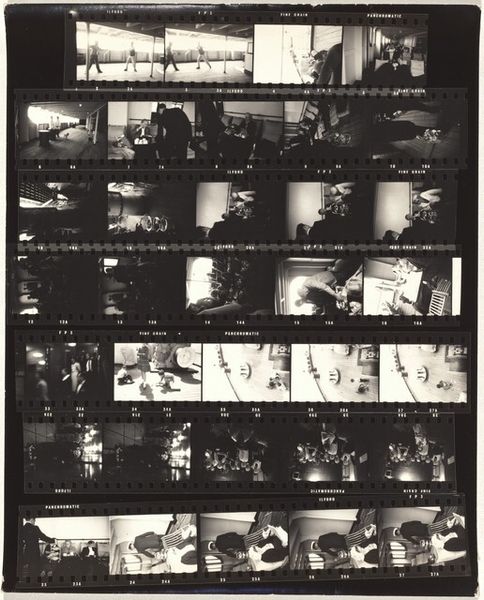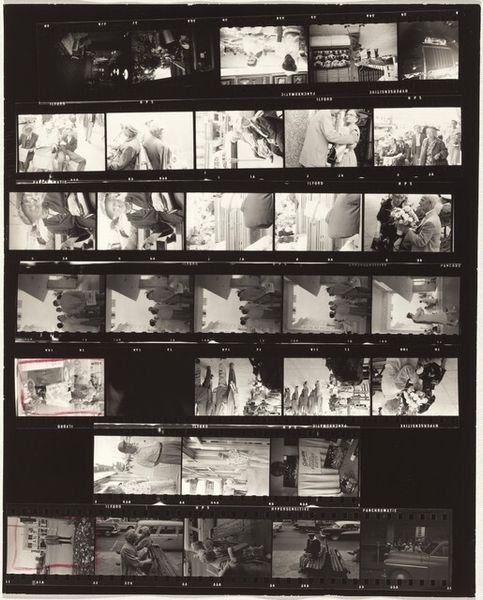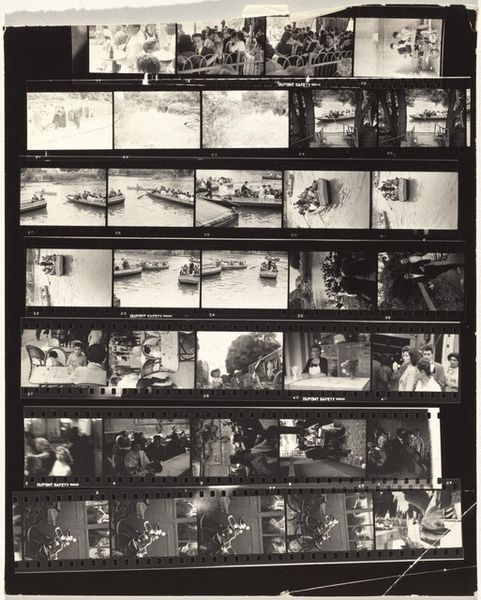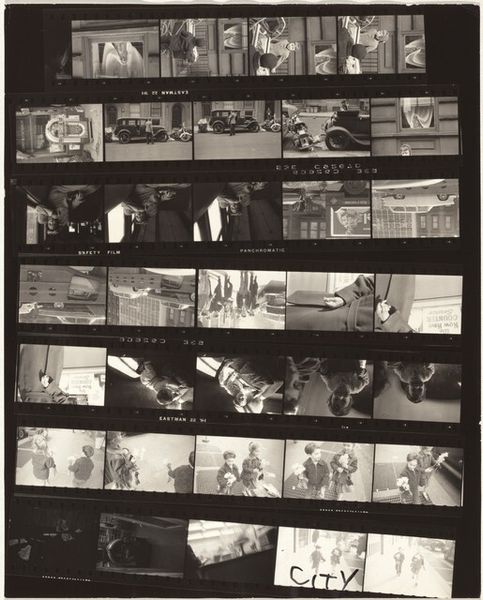
Dimensions: overall: 25.2 x 20.2 cm (9 15/16 x 7 15/16 in.)
Copyright: National Gallery of Art: CC0 1.0
Editor: This is Robert Frank's "Paris 27" from 1959, a gelatin silver print featuring contact sheets of what looks like a sculpture being made. There's a great emphasis on process; you see the artist and their materials in various stages. What are your initial thoughts when you see this piece? Curator: I'm struck by how Frank elevates the normally unseen. Contact sheets are working documents, often discarded, but here they become the art. He makes the means of production, the sculptor's labour, central to the image. What do you think this says about Frank’s views on art and the artist in society at this time? Editor: That’s interesting. It almost feels like he's democratizing the artistic process, pulling back the curtain. It is visually chaotic though with the series of different cropped scenes together. Curator: Precisely! And it challenges traditional notions of authorship and artistic genius. Think about the period: The late 50s saw increasing disillusionment with established power structures. Do you see echoes of that in Frank's decision to foreground process over a polished product? Editor: I see what you mean. There’s a sense of rawness that breaks away from the idealized image often presented. Curator: Exactly! This work isn’t just about the sculptor; it’s about the socio-political atmosphere shaping artistic expression. The "decisive moment" that Cartier-Bresson pursued isn't what Frank is after; it is closer to "everything that surrounds it and led up to it" which shifts agency and responsibility in what we're supposed to value when interpreting a work. Has looking at the image this way changed how you view it? Editor: Definitely! I now appreciate it more as a statement about the value of labor and a questioning of traditional art hierarchies rather than simply documentation of it, thanks! Curator: I’m glad to hear it. Understanding art through a historical lens allows us to appreciate the cultural conversations embedded within. It provides additional pathways into art analysis which go beyond its initial impressions.
Comments
No comments
Be the first to comment and join the conversation on the ultimate creative platform.
